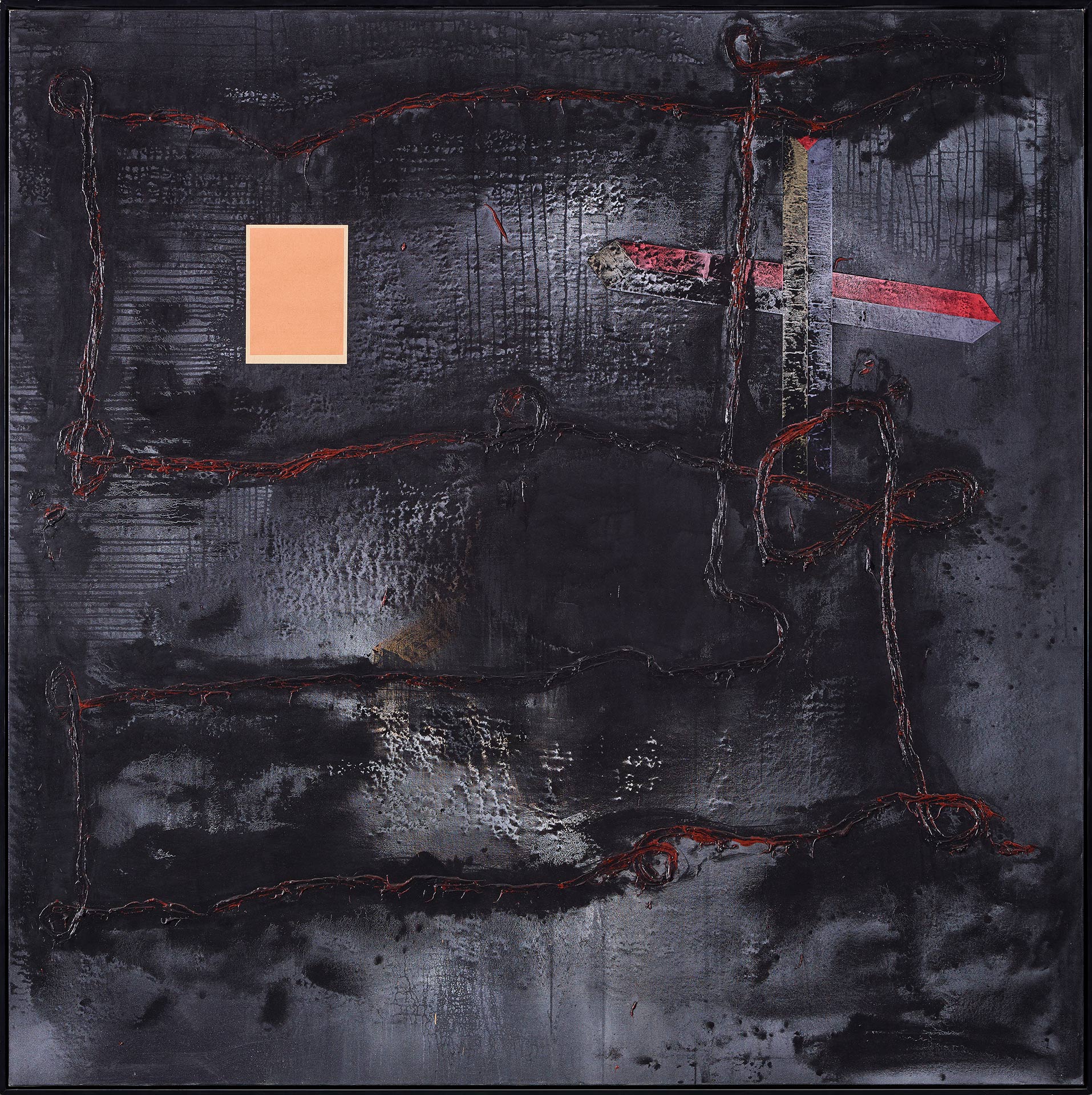
José Manuel Broto (Zaragoza, 1949)
Untitled
1989
WORK INFORMATION
Acrylic on canvas, 230 × 230 cm
OTHER INFORMATION
Inscription on the reverse: "Sin título / Broto"
In 1989, the year in which two of the works in the Banco Santander Collection were painted, Broto already had years of solid pictorial and exhibition experience under his belt and was one of Spain's most reputed abstract painters. His story began in his hometown of Zaragoza, where he studied education and arts and crafts, although he considers himself a self-taught painter. There he also had his first one-man show in 1968 and discovered the work and style of the French group Support-Surface, sharing their interest in an abstract, reductionist aesthetic and defending the merits of painting as opposed to conceptual and technological artistic practices. In the early 1970s Broto explored geometry, seeking forms of compositional order that would lead him to produce minimalist, monochromatic paintings after moving to Barcelona in 1972. He was followed by several friends, the painters Javier Rubio and Gonzalo Tena and the writer Jiménez Losantos, and together with the Catalans Xavier Grau and Alberto Cardín they consolidated the group initially formed in Aragón, founding the journal Trama in Barcelona. There, in addition to French pictorial abstraction, Broto was introduced to the work of Tàpies, who would have a major influence on his output. Composición abstracta en negro [Abstract Composition in Black] illustrates the minimalist aesthetic he embraced during that period. A flat geometric space, a vertically bisected rectangle rendered like a delicate charcoal skin of gentle, transparent textures, dialogues in its most abstract dimension with the austere paper ground.
The Trama group was openly supported by Tàpies, who in 1976 wrote the catalogue essay for an exhibition of Broto, Grau, Rubio and Tena's work at Galería Maeght in Barcelona. That same year they were represented at the Venice Biennale.
Broto's minimalist paintings from the 1970s materialised his quest for pictorial space and were extremely contained in terms of both brushwork and palette, limited to whites and greys. In the final years of that decade his painting drew closer to American Abstract Expressionism, without forgetting European painting and Cézanne, and opened the door to oriental aesthetics. In the early 1980s his pictures acquired more dynamic tension. The backgrounds grew chromatically richer, constructed with transparencies and spontaneous gestures that form bows and lines, marks of the route taken by the brush, creating seemingly random loops and shapes.
In 1985 Broto moved to Paris, where he stayed for ten years, and one decade later he was awarded the National Visual Arts Prize. The fresh momentum that appeared in his works after moving to the French capital was combined with constant references to music, felt and understood as an abstract language that the painter evokes in his pictures dedicated to Messiaen, Bach and other composers. Some of these tributes date from 1989. Untitled and La señal II [The Signal II], also from 1989, illustrate a pictorial style limited in colours but rich in nuances, transparencies and accumulations of the diluted acrylic paint. In Untitled, a dark red line traverses the composition like a graphic element floating above the irregular darkness of the ground. The colours are muted to make the light rectangle hovering in the upper register more visible. As a testament to the geometry Broto had explored years earlier, or perhaps as a tribute to the first abstract creations of the 20th century, the rectangle provides a rational counterpoint to the chaotic field of the painting.
Another rectangle appears in The Signal II, a luminous work where the liquid paint defines brushstrokes suggestive of running water. The Journées [Days] series from this period also contains allusions to water, a product of Broto's interest in Leonardo da Vinci's research on water. The black and red rectangle seems to be falling, dragged down by the watery streaks. The picture links that logic of the geometric shape with the vital form of its brushstrokes. [Carmen Bernárdez]

